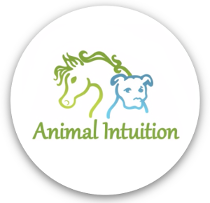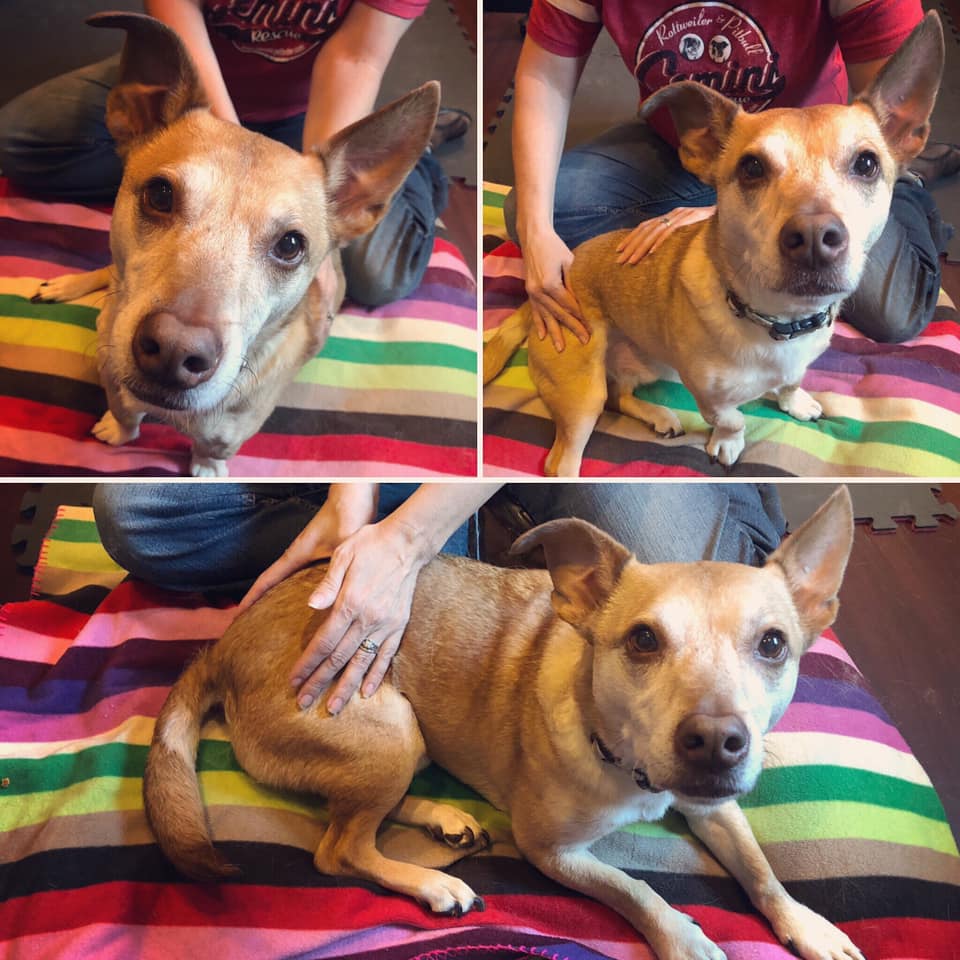Learn about the top 8 ways to prepare for your dog’s massage. Dog massage preparation is key in getting the most out of your dog’s session. People’s expectations of what a dog massage experience will be like for their dog and what really happens is often two different things. A dog’s demeanor and attitude can change with each session depending on how their feeling and what’s happening in the environment around him or her. The more massages they receive, the more they learn what to expect and how to act, which can change their response as well. To learn more about how your dog may respond and behave during their massage, read, ” Dog Massage: Dogs Respond Like Dogs“.
Read the “Bonus” section at the end to find out a little more about what a skilled canine massage therapist does to help your dog get the most out of their session.
Top 8 Ways to Prepare for Your Dog’s Massage
Here’s the top 8 ways to help prepare you for your dog’s massage and get the most out of their sessions:
-
Toys | Treats
Bring something from home that you know will occupy your dog and keep their energy focused on throughout the session. There are a variety of options, based on what your dog likes and your goals:
- Frozen Kong
- Lick mat
- Bone
- Bully Stick
- Toy
- Meal (hand feed)
Know your dog. For dogs with resource guarding of food and items, this should not be considered as an option during one of our healing sessions.
You can bring something from home of we have a variety of dog treats, bully sticks and chews available for purchase.
-
Training
Training your dog to learn basic commands that can be utilized throughout the session can keep them calm, focused, stationary and redirect them back when needed. These tools are great for more than just preparing for your dog’s massage; they’ll be helpful for navigating through various life’s adventures with your dog.
- Sit
- Stay
- Down
- Place
- Come
-
Exercise
For high energy dogs and active dogs such as terriers, it can be helpful to exercise them prior to their canine massage. Giving them an opportunity to burn off some energy will make them more apt to relax while in session. If they are on prescribed rest from their vet, mental stimulation can help release some of the pent up energy. You can always use a combination of physical and mental stimulation based on what your dog needs. Here are some ideas for mental activities.
- Puzzle toys
- Teach a new trick or command
- Training sessions (i.e. work on reinforcing current commands)
- Nose work / “Find It” game
- Teach new words or objects
-
Be prepared to leave us
Sometimes dogs respond better when their people are not present. While we start with you there and prefer that as we can also discuss any questions and what I find during the massage. And really, most often clients stay in the room while the massage is done, especially during an office visit. However, it’s pretty common for home visits that the humans are not even home or in the same room. It’s just another option to consider should your dog be extra wiggly or busy.
-
Participation
Dogs love and trust their people and often listen best to them when commands such as sit, down and stay. So, clients may simply be advising their dogs throughout the massage session. Dogs will often respond more positively if their people are reassuring them and participating in the process. Sometimes I’ll have clients pet or scratch by the dog’s ears or under their chin to comfort and distract them. Or I might suggest to hold a toy or treat for him/her while they chew on it. It can also be helpful to leash the dog to keep them stationary and focused.
-
Give A Moment
During a dog massage, their nervous system is activated and hormones released. This can trigger physical and emotional responses to their treatment. It’s normal for dogs to move, shake, stretch, and yawn throughout the session. Giving them a minute to honor what their body’s needs deepens the impact of the massage and also optimizes their experience.
-
Muzzle
It’s perfectly acceptable for my clients to use a muzzle during a dog massage or any other session we might have with a reactive or fearful dog. It’s far better to be safe for everyone. I’ve had some dogs start out being muzzled and eventually feel comfortable and safe enough that they no longer need to wear one during their canine massages. It just depend on the dog.
Dogs can be taught to wear a muzzle comfortably. In fact, I muzzle train all my dogs so should the need arise, I can use one without adding stress to a likely already stressful situation. I do have a couple muzzles on hand, but it is best to bring a muzzle that fits your dog.
8. Calming Agents
Some dogs that are extremely anxious, fearful or not trusting of humans may benefit from calming products such as CBD oil or essential oils to help calm their nervous system. Any Cannabidiol (CBD) oil products should be derived directly from an organic hemp plant with zero THC. You want a quality, bio-available product sourced with your pet in mind. A small dose approximately 30 minutes before their session can help them be more at ease and handle the stress they may feel in a new or different environment.
Essential oils such as lavender, Peace and Calming or T-Away can be used with your pet topically or diffused. An easy way to diffuse if you’re commuting is to put a few drops of the essential oil on a cotton ball and stick between the air vents in your vehicle. For your convenience, these products are available right at our office as well as online.
Mix and match these these tips as you see fit to help you prepare for your dog’s massage.
Bonus: Your Canine Massage Therapist’s Role
Bonus information about what your dog massage therapist does for your dog’s massage …..
Now, remember, dogs are dogs. They respond so differently than humans do during their massages. Some do relax, lay down and engage in the massage, while others simply have a different agenda….following their nose, check with their human, nervous and unsure of being handled…. whatever the case, your dog’s massage can be optimized by following these top 8 tips to prepare for your dog’s massage listed above. Some dogs learn over time and some just never get on the same page as to what our goals and intent are for their canine massages. If you’re interested in learning more about how often your dog should receive canine massages, you can read more about that by clicking on the link.
Regardless, your dog’s best interest is kept in mind so they get the most out of a session physically, emotionally and mentally. The focus is to work towards your goals while making it the best experience possible for your dog. It’s important to operate with patience and compassion. And to adjust massage techniques for the dog’s needs; for example to work slowly if a dog needs extra time to get comfortable. Building trust with you and your dog is paramount in the development our relationships.
We work up to being able to massage in certain areas if it’s too uncomfortable. There are a few tricks up my sleeve that I’ve learned since launching Animal Intuition back in 2005 (take a look at how we started if you’re interested)! Each dog is unique in their needs and response. I understand their body language, use my intuition and listen to what insight you share with me about your dog.


Comments
Pingback: How Often Should My Dog Get Massaged? - Animal Intuition